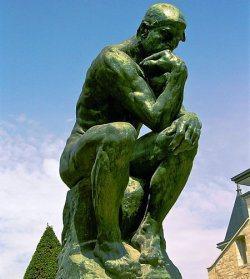 Epistemology is the study of knowledge itself. It tries to determine how we can distinguish knowledge from belief, and so an epistemology is a theory of, or more properly about, knowledge. Here “knowledge” is meant to mean verifiable facts forever true, while belief is meant to signify subjective thought not necessarily provable by science. The problem is complicated by the fact that provability itself is often called into question. For example, many 20th century philosophers (Popper, Feyerabend, Kuhn, Lakatos) stood by the claim that said for any statement to be scientific, it has to be, at least in theory, refutable. While this seems to fly in the face of common sense, it is meant to distinguish the field of science from religion, the latter which need not be verifiable by science. “God exists in Heaven” is not untrue because God does not exist in heaven; it is untrue, or a non-scientific statement, because there is no conceivable way anyone can prove otherwise.
Epistemology is the study of knowledge itself. It tries to determine how we can distinguish knowledge from belief, and so an epistemology is a theory of, or more properly about, knowledge. Here “knowledge” is meant to mean verifiable facts forever true, while belief is meant to signify subjective thought not necessarily provable by science. The problem is complicated by the fact that provability itself is often called into question. For example, many 20th century philosophers (Popper, Feyerabend, Kuhn, Lakatos) stood by the claim that said for any statement to be scientific, it has to be, at least in theory, refutable. While this seems to fly in the face of common sense, it is meant to distinguish the field of science from religion, the latter which need not be verifiable by science. “God exists in Heaven” is not untrue because God does not exist in heaven; it is untrue, or a non-scientific statement, because there is no conceivable way anyone can prove otherwise.
In trying to determine knowledge from belief, or specifically true belief, several main theories have been put forward, from which hundreds of derivatives have been spawned. There have been three main approaches to the problem. Some have theorized that knowledge is identical to true belief, some say knowledge concerns ideas while belief concerns things in the material world, and others think there is no knowledge at all, only true belief. Defining what I mean by these terms then is important. I define knowledge here as facts good for everyone at every time, verifiable and repeatable; belief I define as a determination made by someone based on their personal evaluation and not necessarily verifiable or repeatable to anyone else.
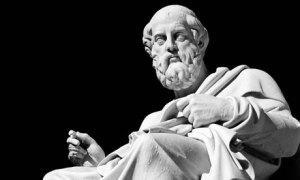
Remember that what Plato did was combine the never changing world of Parmenides with the ever-changing world of Heraclitus Seeing both as correct, his goal was to combine the two into a single harmonious theory.
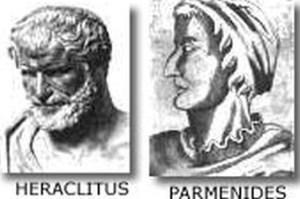
Now as to how knowledge, or even true belief, are acquired, there have been three main theories, all of which derive from Plato:
1. Rationalism: The mind already knows something, perhaps many things, before ever perceiving anything. Knowledge is the coordination of the ideas with the objects of perception. Were it not for the mind, you would never see what is being perceived. Recall Descartes’ “I think therefore I am.” Existence proves essence. Without mind, and indeed, the naming process, you can look all you want, you will know nothing thereby. This is also called idealism, or formalism, or even realism (forms or ideas being most real). Knowledge, and in fact all things, are dependent on the mind.
2. Empiricism: The mind knows and can do nothing until it receives information from the five senses. In the words of Locke, the mind is “but” a blank slate until impressions are placed on it via the senses. Here knowledge is true belief, and it can be no more since there is no real eternal world of forms, Ideas themselves are derived from the objects of the senses. It is interesting to note, though, that even Locke recognizes the existence of the slate, blank or not. It is the scanner of the slate, the reader, that Empiricism usually denies. Pragmatism, which derives from Empiricism, even defines science, or what is true, as what works; if it works, and is true today, it is true, whether or not true tomorrow. It is the best we can do at the time, and this indeed seems the limits of empiric, or sensory-based, epistemologies. Knowledge here exists independent of whether mind sees it or not.
3. Transcendentalism: Primarily the philosophy of Kant, who attempted to reconcile (as did Plato with Parmenides and Heraclitus) the rationalists and empiricists. For Kant, every perception requires the mind, and every idea requires perception. Basically, both the mind and the senses together are necessary for any knowledge. He distinguished, therefore, a priori knowledge, or knowledge known before or apart from the senses, from a posteriori knowledge, or knowledge known or which comes via the senses first. Kant was an idealist in the sense that he believed everything, that is all knowledge, relies on the mind, the rationale being even if an objective world of fact exists, it could not be known without mind. This is why many consider Kant’s “transcendental idealism” to be a rationalist position.
The upshot of the “Kantian revolution” was that science and religion were said to rely on different criteria. His Prolegomena to Any Future Metaphysics therefore does not prohibit discussion of things metaphysical, and hence, empirically unprovable, but rather states that they need be discussed differently than we discuss things of science. From his work the idealisms and person-centered phenomenological philosophies of thinkers like Heidegger and Husserl, and the existentialisms of Kierkegaard and Sartre, would derive.
We should probably also mention logical positivism, not technically an epistemology, but rather a method for uncovering what is true. This relies mostly on logic and syllogisms, determining what follows from given and accepted premises.
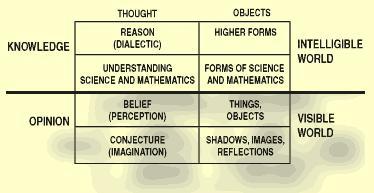
While there are now hundreds of derivative theories of knowledge, and still more about means of discovering knowledge, what they all have in common is a quest for evidence. Widely discussed and offered by itself as proof on numerous occasions, what constitutes evidence, and the difference between good and bad evidence, is not so much discussed. The senses, we know, provide our first glimpse at understanding, but the senses, we also know, can deceive us. People see things that are not there, or on other occasions fail to see what is right in front of their eyes. Skepticism, then, as particularly and most eloquently expounded by Hume, is the belief that there is, according to the classical definition of knowledge – that being what is always and universally true – no way to reach such knowledge, and that therefore we must be skeptical as to its existence. For Hume true belief is the best we can do.

And this is the skepticism that has, unwittingly to its founders like Hume (whose “true belief” seems identical to knowledge…), led us directly to the sorry state of scientific pragmatism we have today. Truth, with a Big T, has all but been discarded, replaced by the pragmatics we now have. Truth, in the classic sense, is no longer sought after, or a requirement for what might be called scientific. What is true, today, regrettably, is what works, whether true tomorrow or not.
Let’s then apply these theories to our subject matter, which has been, and still is, a discussion as to the Origin of Man. We begin by imagining several stacks of photographs and videos for each of the following subject matters. These we will call evidence, or alleged evidence, for the following:
1. The evidence for the existence of UFOs and alien beings will be one stack.
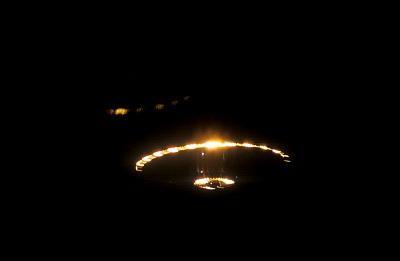
2. The evidence for our being in deep space, meaning photos and videos that could not possibly have been taken on Earth, or with a terrestrial telescope, or from an aircraft, will be another stack.

3. The evidence for secret, hidden, or misnamed government bases and underground complexes, as well covert projects and operations, will be another stack.
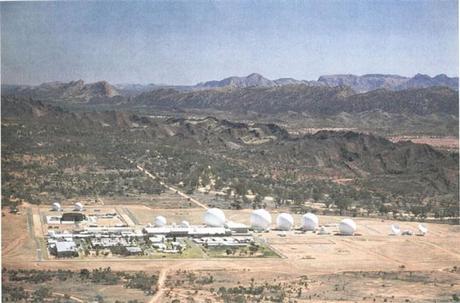
4. The evidence for photons, quarks, and the like, will be another stack.
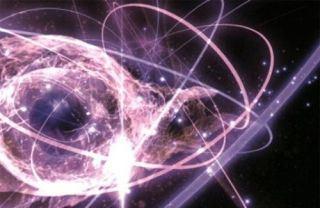
Keep in mind we are not talking here about illustrations, or otherwise “artist conceptions” which of course can be as fabricated as the creator of that picture’s ideals (as in #4, above). We are talking about allegedly authentic evidences of these phenomena.
Assuming their raw volume approximately the same, how how can we distinguish the claims of one pile over another? Assuming as much “evidence” exists for one as for the other, are we to conclude therefore that they are all equally proven? Even under a pragmatic system, can we thereby use this to say they are all equally true?
Certainly not. Quantity itself is only a small part of any claim to truth. Too many today take the side of their choosing, then present their “evidence” without any real questioning as to the quality of that evidence. Manifestly, the only way to handle these evidences, presented in each stack, is on a case-by-case basis, each one possibly real, each one possibly a photograph glitch, light problem, hoax, or stage setup.

In today’s age of Photoshop, video tools, and cameras on every cell phone, and with the pervasive “artist conceptions” manipulating the mind into positing reality on what might only be fantasy, determining good evidence from bad evidence is no easy task. In the end it comes to acceptance of authority on far too many occasions. Thus if NASA shows a photo of the alleged surface of Mars, we believe this more than, say, Bill Smith’s photo of the UFO, although they both be as clear. This belief is too often not based on a consideration of the evidence itself, but rather the source of the evidence, the perceived esteem of the authority behind it.

I have written already about authority on this blog. What I want to say here is that evidence presented is not always good evidence, regardless of the source. In this time of epistemological pragmatism, where the authority is often the only justification for the evidence presented, we need to especially be on guard against abuses of this authority. In politics, in law, in science, with the use of statistics, and artist conceptions, we can be manipulated, in fact made to believe almost anything. Here, in prior chapters, I have shown this to be the case.
In justifications for too many modern concepts the only proofs, or evidences offered are this authority and these artist conceptions. For the Big Bang, for the existence of microparticles, for the validity of Evolution, and so, I have shown many examples of these artist conceptions, and detailed many examples of fabricated evidence. This is necessary because, it seems today, even well-educated and respected researchers are not beyond doing things to make a buck, and not beyond taking facts out of context to prove their theses. Especially considering the livelihoods which depend on such evidences, and the pressure to publish, we have many reasons to be skeptics about the claims of modern science. We have uncovered many of these pseudo-truths, or bad evidences, as they pertain to the Origin of Man already, and now they arrive even more by the day.
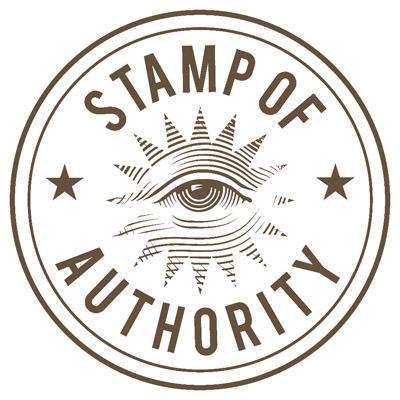
In today’s science, under a pragmatic approach to knowledge, bad foundations have become the basis for further bad science, with bad evidence offered too much along the way. What we need to do is again become critics of science, since it will not willingly do the job itself (doctors rarely go against each other, for example). Rather, the usual process in academia is to accept the premises of another and build on it, therefore ensuring publication. In the last century, it was philosophy that provided this counterbalance and check on scientific proclamations. Most of the real philosophers now buried, the remainder treated for the most part as pseudo-academics, their voices are too few, too soft, and too cowardly. For many of those philosophers who still have any clout at all, rather than check science, too many play up to it, and indeed use the bad science as launchpads for their own therefore shoddily-based ideas.
It is a vicious cycle, and when money drives research money gets the results it wants. Knowing most lay persons jump to the conclusions without reading the details of the studies, the studies are crafted so as to prove theses rather than testing them. As evidences are offered “testaments of the tenured” and the results obtained from machines and photographies which themselves face little scrutiny. If every NASA photo and video was examined as thoroughly as are some of the less scientifically accepted photos (UFOs, e.g.), and the authority ignored, what we would find is no more evidence for, say, Mars or the moon landings, than for the existence of alien creatures and flying saucers.
I am equating the validity of UFOs and Mars shots only for example. What I am equating in actuality is the authority, and lack thereof, as being supportive, or deleterious to the evidence presented. Knowing true from false is no longer as simple as believing what you see. In science, in political events, in even art, you can be deceived very easily. Be on your guard and demand the goose be as thoroughly researched, and tested, as the gander. Confusing you has become the nature of the game.
